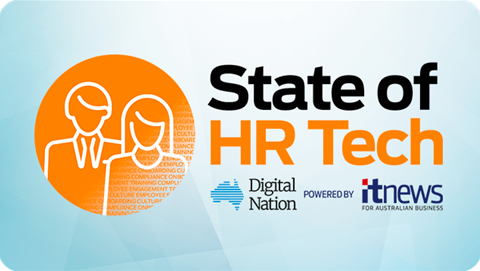Image: Andrew Henderson, Jitterbit.
With a recent global study by MIT CISR finding Australian organisations were amongst the poorest performers when it came to digital fitness, there is much to be done when it comes to raising local digital capabilities.
According to Andrew Henderson, one of the key barriers to digital fitness is the difficulty that many organisations face when moving data from one function to another.
As the Asia Pacific managing director for the Integration Platform-as-a-Service (IPaaS) provider Jitterbit, Henderson has worked with numerous organisations to help unblock their data flows.
What do you think is holding back the digital fitness of Australian organisations?
Customers have a fairly clear view on what it is they need to achieve, because it's creating a pain point in their business in terms of their ability to gain efficiency in their processes. We're seeing customers’ performance being hampered because they're on multiple systems that don't speak to each other, and that creates a ‘swivel chair’ mentality and a lack of customer service. That can really be fast-forwarded with automation.
So what is it you think the customers are missing out on?
It's really a case of saying, ‘I have a whole bunch of assets in my environment, how do I bring all of those together to give my internal and external stakeholders a more efficient process?’
How do you help them solve this problem?
We have four pillars to our integrations. The first is we connect assets together. The second is we look inside to see what data is meaningful for the next step in the process. And third, and most importantly, is where we want that data to move to. And lastly, how we report it.
So if you've got data sitting on-premises in a database that you need every time you fulfill an order or answer a call centre query, rather than having to navigate multiple systems, this allows you to run that query across the top. And regardless of where assets reside, it connects all that information together to make it more meaningful.
We're a ‘cloud first’ application. We don't require hardware in a lot of cases. So you're building integrations and pushing them up into our cloud. Our ‘agents’ push that data around for you.
Can you give us an example of this in action?
So the company Quadient sells franking machines and photocopiers. Historically they would have a sales rep go out and speak to a customer, and that sales rep would take an order and process it through a system that required double entry to process the order. Then the customer would call a week later to work out the status of that order, and because that information wasn't at that rep’s fingertips, they had to contact the call centre, which looked it up and called them back. So you can see the amount of handoffs in that process.
By bringing Jitterbit to bear, we're effectively running across the top of all of those systems. And so now, when a customer calls that rep, they can look up the system on a laptop.
Where else can we see this brought to life?
Our customers range from the top end of enterprise all the way down to small not for profits. We've got organisations where we are reading their machine data. So when an event occurs within their fleet, we can look that up and understand the product codes and work out what the issues are.
So what is the end game for a customer?
It doesn't matter whether you're big, or a small not-for-profit, no one has all of their business processes automated to the extent that they could. And because we've touched many systems, we appreciate and understand their interdependencies and how processes work, which means there are ways we can advise on best practices design.
So can you tell us a little bit more about Jitterbit itself?
The business is headquartered out of San Francisco, but we have a sprinkling of offices across the world. We're in Melbourne, Sydney and Singapore with boots on the ground, and I like to refer to us internally as a microcosm, because here in Australia we have everything that Jitterbit in the US has, with the exception of engineering. And the capability we have on the platform continues to grow. It's been quite fulfilling, because we go in, we recognise a customer's problem, and within a month or two we walk out of that customer and problem is solved.
What about your partner program?
We have an extensive channel program, and we’re always open to having further conversations with potential partners out there. And it's not just partners to assist in implementation, but it's also partners that are technology vendors in their own right that don't want to build an integration every time they walk into a new customer.



.png&h=140&w=231&c=1&s=0)
_(20).jpg&h=140&w=231&c=1&s=0)




_(26).jpg&w=100&c=1&s=0)

 iTnews Executive Retreat - Security Leaders Edition
iTnews Executive Retreat - Security Leaders Edition












_(1).jpg&h=140&w=231&c=1&s=0)



